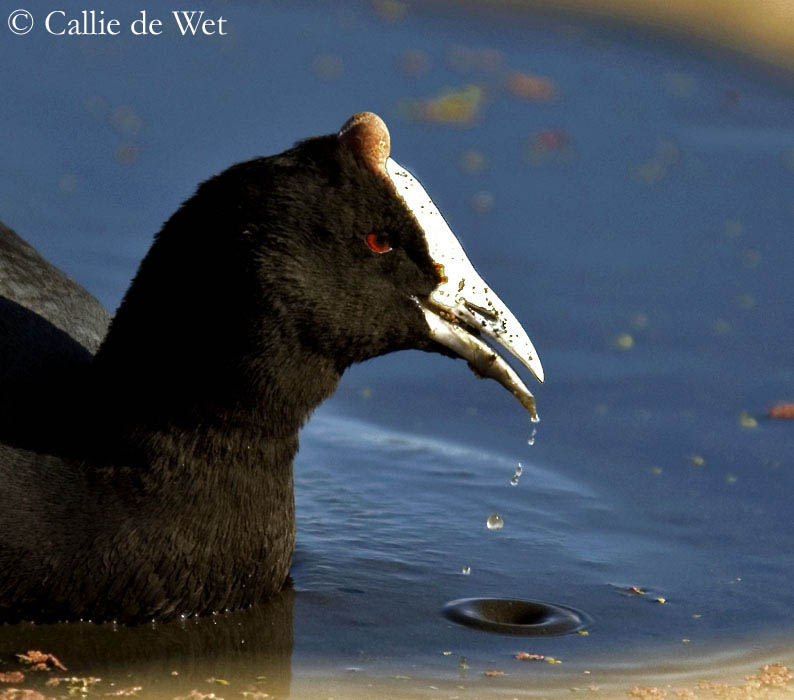
Red-knobbed Coot
Fulica cristata
BIOMETRICS:
Length: 38-42 cm; Wingspan: 75-85 cm

Red-knobbed Coot is larger than Eurasian Coot, and lacks any white at tips of secondaries. It has more uniform plumage. Legs and feet are greyish blue, with long lobbed toes. Eyes are dark red. It has strong whitish-blue bill.
In winter, red knobs are much reduced. We can see only a small dark red patch. Both sexes are similar. Juvenile lacks red knobs.
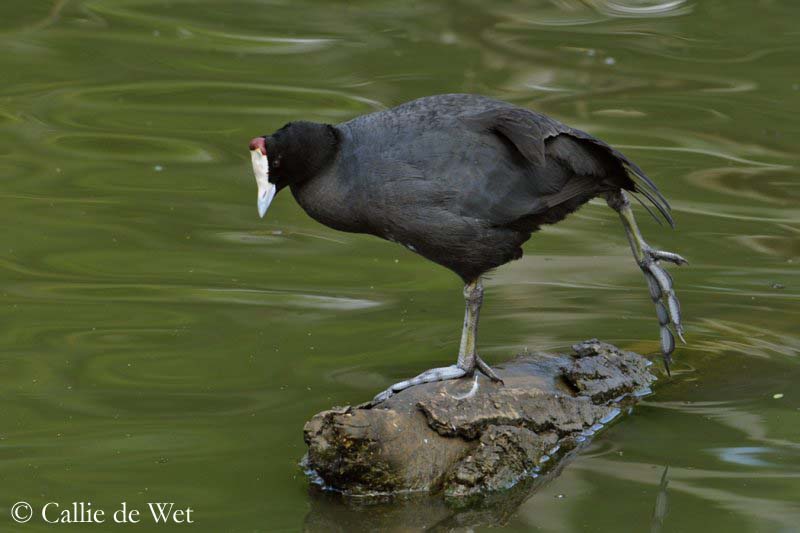
VOICE: SOUNDS BY XENO-CANTO
The most frequent calls of Red-knobbed Coot include a disyllabic ‘klukuk”, deeper than that of Eurasian coot, and a metallic ringing ‘krook”. Several other calls may be heard, most being deeper than Eurasian coot, including a groaning “euh”.
HABITAT:
Red-knobbed Coot lives in marshes and freshwater lakes with fringing vegetation.
RANGE:
Red-knobbed Coot lives in Eastern and Southern Africa, and Madagascar Island. Some very local populations live in Southern Spain and Morocco.
BEHAVIOUR:
Red-knobbed Coot is shyer than Eurasian coot, and hides very quickly into vegetation. It is a gregarious bird which can be seen in very large numbers, up to 1000, outside the breeding season. During this period, Red-knobbed Coot is territorial and pairs stay in the territory all year, chasing away all the intruders which approach the site.
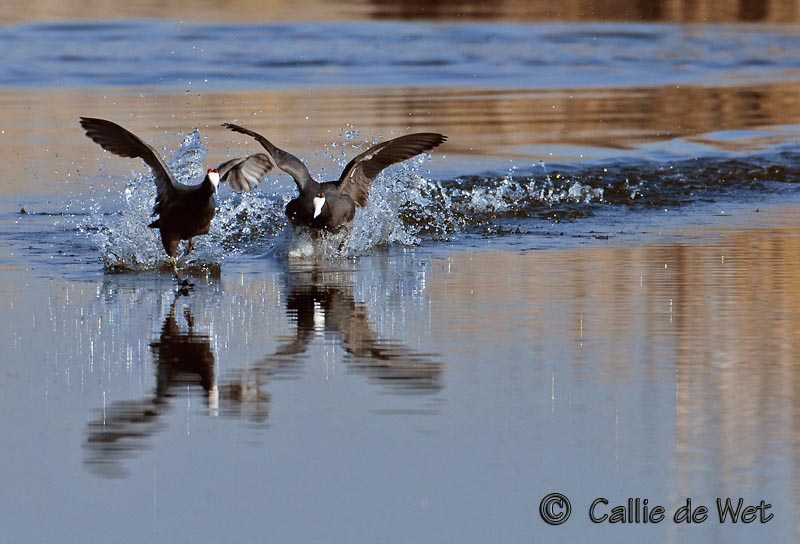
Red-knobbed Coot spends most of its time swimming in open water. It forages in water from surface, or by diving, and also grazes on the shoreline, running to the water when disturbed. It may stand on the shoreline to preen.
FLIGHT:
In flight, Red-knobbed Coot shows its narrow neck and its wings entirely dusk. It runs on the water before to rise in the air.
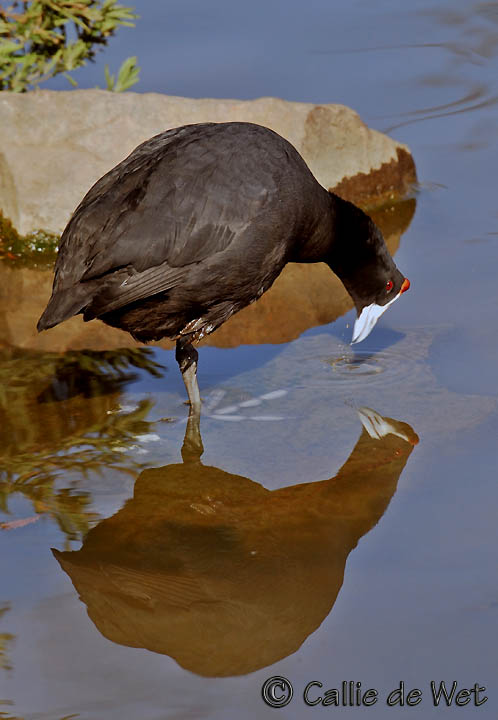
REPRODUCTION:
Red-knobbed Coot’s nest is built by both adults, with sedges and dry leaves. It is a floating platform in mid deep waters, and situated in aquatic plant area.
Female lays 4 to 6 sandy greyish eggs, speckled with black or dark red. Incubation lasts about 20 to 22 days, by both adults. Chicks leave the nest one day after hatching, and may swim near their parents which feed them during one month.
DIET:
Red-knobbed Coot feeds on stems and roots of aquatic plants. They eat also seeds, grain, and aquatic invertebrates.
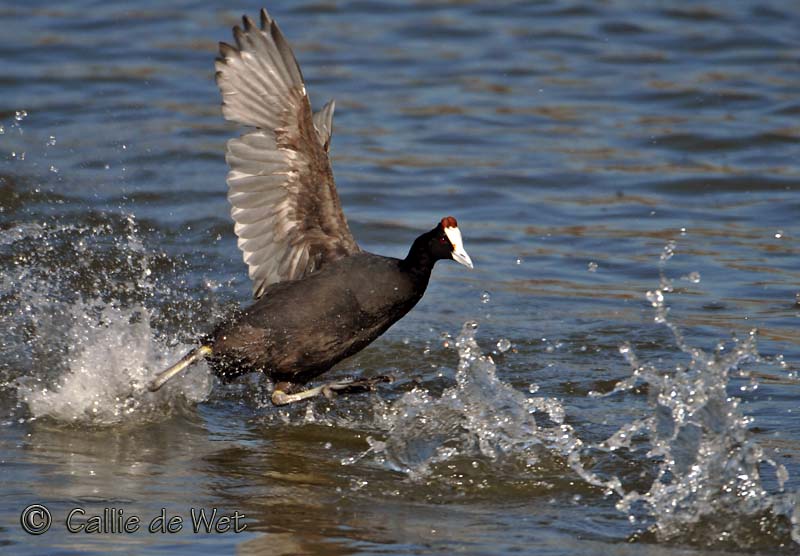
PROTECTION / THREATS / STATUS:
Red-knobbed Coot is endangered. Hunting is responsible of the extinction of local populations. But habitat loss and degradations to extend agricultural areas are other responsible of their decline.
Fr: Foulque caronculée
All : Kammbläßhuhn
Esp: Focha Moruna
Ital: Folaga cristata
Nd: Knobbelmeerkoet
Russe: Хохлатая лысуха
Sd: Kamsothöna
Callie de Wet
GALLERY
Text by Nicole Bouglouan
Sources:
HANDBOOK OF THE BIRDS OF THE WORLD Volume 3 by Josep del Hoyo-Andrew Elliott-Jordi Sargatal - Lynx Edicions, 1996, 821 pages - ISBN : 8487334202
BIRDS OF AFRICA SOUTH OF THE SAHARA by Ian Sinclair and Peter Ryan - Princeton University Press Princeton and Oxford - ISBN: 0691118159
Wikipedia (Wikipedia, The Free Encyclopedia)
BirdLife International (BirdLife International)